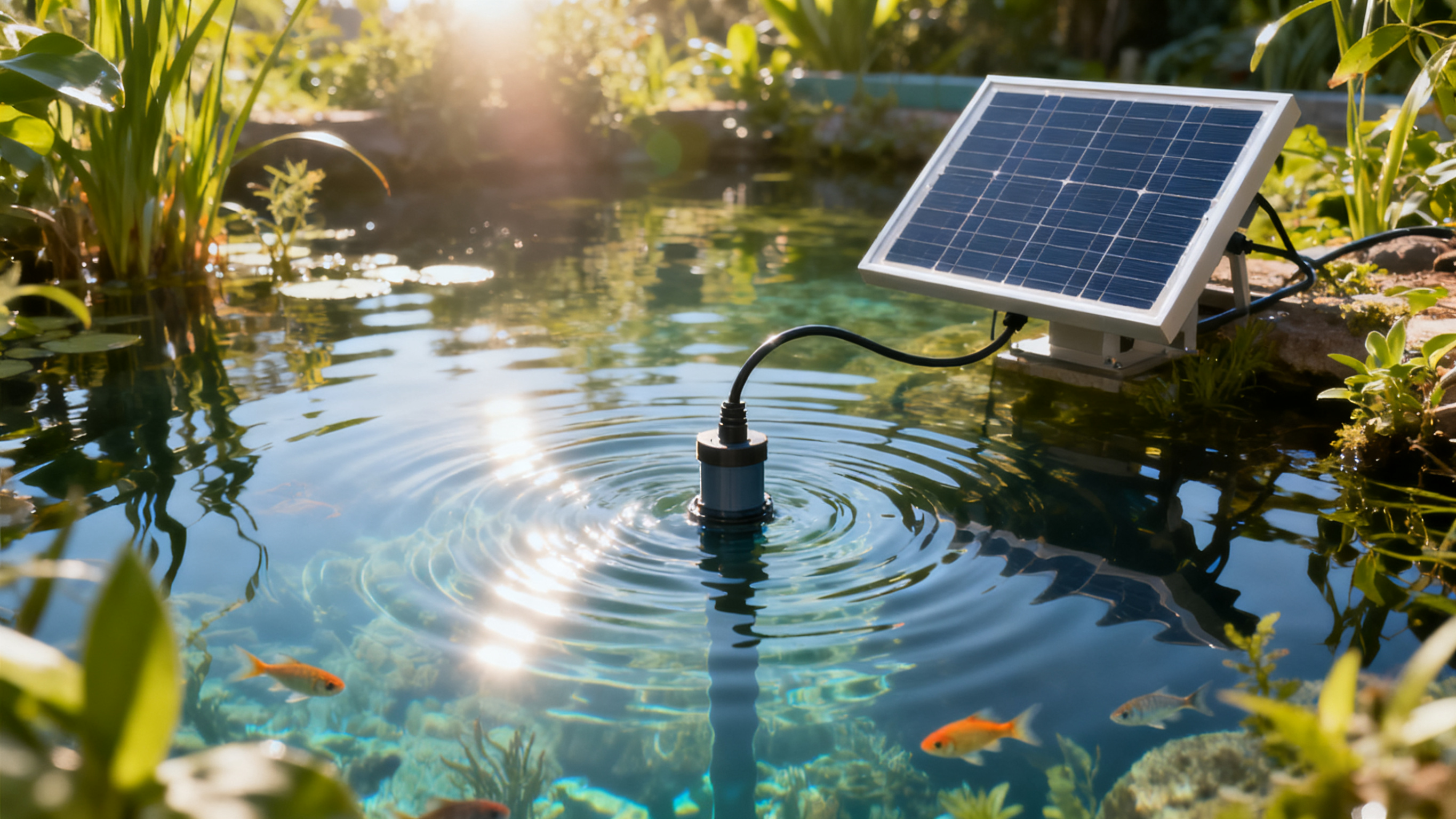Views: 0 Author: Site Editor Publish Time: 2025-10-27 Origin: Site











Solar water pumps offer an eco-friendly solution for irrigation, livestock watering, and residential water systems. But determining exactly how many solar panels you need can feel overwhelming with so many variables at play.
The number of solar panels required depends on your pump's wattage, daily water needs, sunlight hours, and system efficiency. Most residential solar pumps need between 2-8 panels, while agricultural systems may require 10-20 panels or more.
This guide breaks down the calculation process step-by-step, helping you size your solar pump system accurately and avoid costly mistakes.
Before calculating panel quantities, you need to understand your pump's energy consumption. Solar water pumps are rated by their wattage, which indicates how much electricity they consume per hour of operation.
Common solar pump wattages include:
· Small garden pumps: 50-200 watts
· Residential well pumps: 300-800 watts
· Agricultural irrigation pumps: 1,000-5,000 watts
· Large commercial systems: 5,000+ watts
Your pump's wattage directly impacts how many panels you'll need. A 400-watt pump running for 6 hours daily consumes 2,400 watt-hours (2.4 kWh) of energy.
Calculate your pump's daily energy consumption using this formula:
Daily Energy (Wh) = Pump Wattage × Hours of Operation
Example: A 500-watt solar pump running 5 hours daily needs 2,500 watt-hours (2.5 kWh) per day.
Solar systems experience energy losses through inverters, wiring, and batteries (if used). Factor in 20-25% losses for grid-tie systems and 30-40% for battery-based systems.
Adjusted Energy Need = Daily Energy ÷ System Efficiency
Using our example with 75% efficiency: 2,500 Wh ÷ 0.75 = 3,333 Wh needed from panels.
Peak sun hours vary by location and season. These represent the hours when solar irradiance averages 1,000 watts per square meter.
Average peak sun hours by region:
· Southern US: 5-7 hours
· Central US: 4-6 hours
· Northern US: 3-5 hours
Check online solar calculators or local weather data for precise figures in your area.
Required Panel Capacity = Adjusted Energy Need ÷ Peak Sun Hours
Example: 3,333 Wh ÷ 5 peak sun hours = 667 watts of solar panels needed.
Divide the required capacity by individual panel wattage:
Number of Panels = Required Capacity ÷ Panel Wattage
With 300-watt panels: 667W ÷ 300W = 2.2 panels (round up to 3 panels).
Different pump technologies have varying power requirements:
Submersible Pumps: Higher starting current but efficient operation. Typically need more panels initially but use energy effectively.
Surface Pumps: Lower starting requirements but may be less efficient. Consider pump curve data when sizing.
Variable Speed Pumps: Adjust output based on water demand, potentially reducing overall energy needs.
Water demand often fluctuates seasonally. Summer irrigation requires more pumping, while winter needs may decrease. Size your system for peak demand periods to avoid shortfalls.
Adding water storage tanks reduces pump operating time by storing water during peak solar production. This can significantly reduce panel requirements while ensuring consistent water availability.
Latitude affects both solar irradiance and seasonal variations. Northern locations may need 20-30% more panels to compensate for reduced winter sun.

· Pump: 150-watt surface pump
· Operation: 4 hours daily
· Location: Arizona (6 peak sun hours)
· Daily energy: 150W × 4h = 600 Wh
· Adjusted for losses: 600 Wh ÷ 0.8 = 750 Wh
· Required capacity: 750 Wh ÷ 6h = 125 watts
· Panels needed: 1 × 150-watt panel
· Pump: 750-watt submersible pump
· Operation: 3 hours daily
· Location: Colorado (5 peak sun hours)
· Daily energy: 750W × 3h = 2,250 Wh
· Adjusted for losses: 2,250 Wh ÷ 0.75 = 3,000 Wh
· Required capacity: 3,000 Wh ÷ 5h = 600 watts
· Panels needed: 2 × 300-watt panels
· Pump: 2,000-watt irrigation pump
· Operation: 8 hours daily
· Location: Nebraska (4.5 peak sun hours)
· Daily energy: 2,000W × 8h = 16,000 Wh
· Adjusted for losses: 16,000 Wh ÷ 0.75 = 21,333 Wh
· Required capacity: 21,333 Wh ÷ 4.5h = 4,741 watts
· Panels needed: 16 × 300-watt panels
Adding 10-15% extra capacity provides benefits:
· Compensation for panel degradation over time
· Buffer for cloudy days
· Flexibility for increased water needs
Direct Drive: Pump operates only when sun shines. Lower cost but limited to daylight hours.
Battery Systems: Store energy for night or cloudy operation. Higher initial cost but greater flexibility.
Maximum Power Point Tracking (MPPT) controllers optimize panel output, potentially reducing required panel count by 15-25% compared to basic controllers.
Regular maintenance ensures optimal performance and may reduce panel requirements:
Dust and debris reduce output by 15-25%. Clean panels monthly in dusty environments.
Track daily energy production and water output to identify performance issues early.
Tilt panels seasonally where possible to maximize winter production and reduce panel requirements.
Proper sizing prevents costly oversizing while ensuring adequate water supply. Start by accurately measuring your water needs and pump specifications. Factor in your location's solar resource and system efficiency losses.
Consider consulting a solar professional for complex systems or when local regulations require permits. They can perform detailed calculations and ensure code compliance.
Ready to move forward? Calculate your daily energy needs, determine your peak sun hours, and use the formulas above to size your system. Remember to round up to the nearest whole panel and consider adding 10-15% extra capacity for optimal performance.